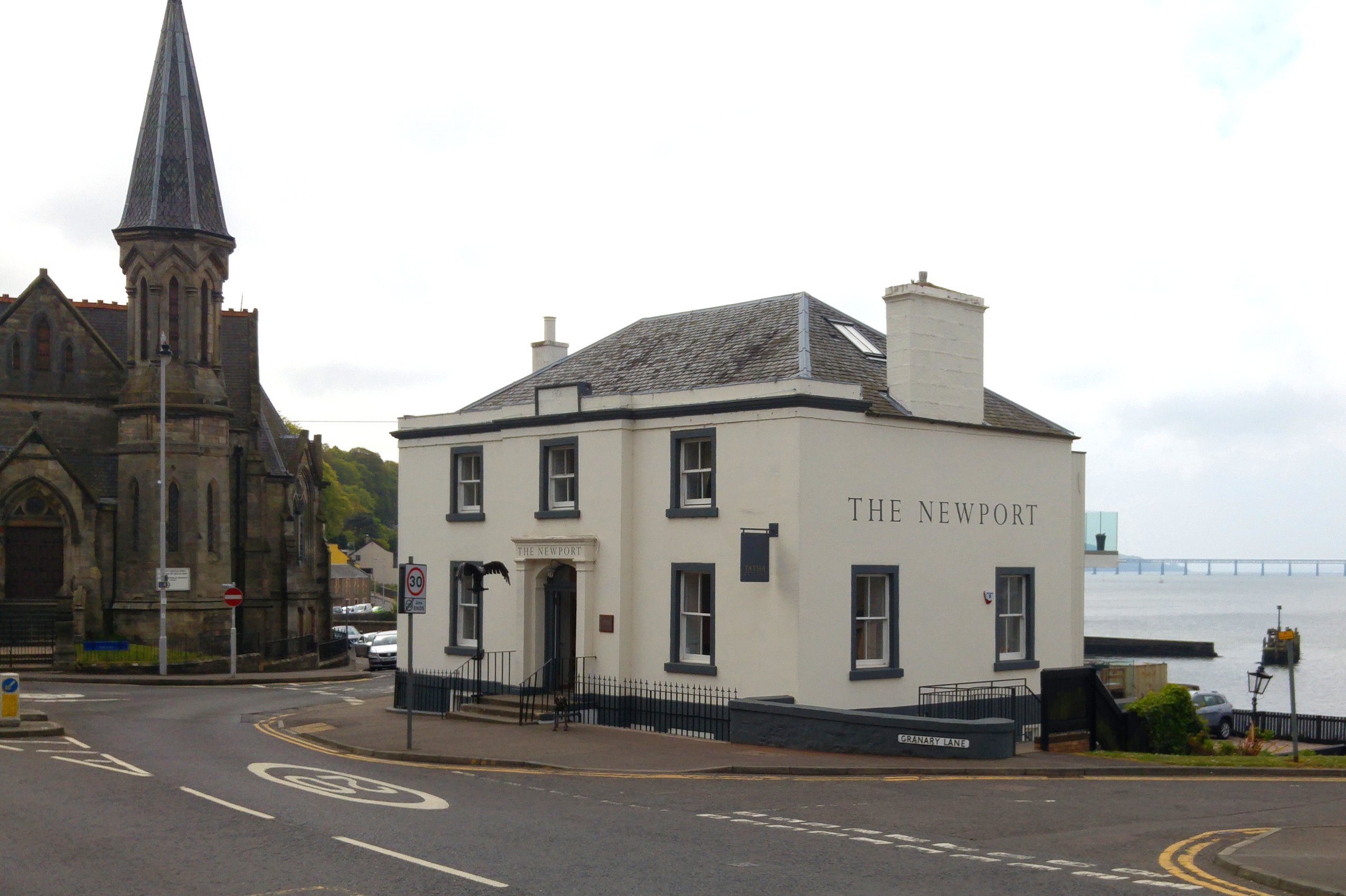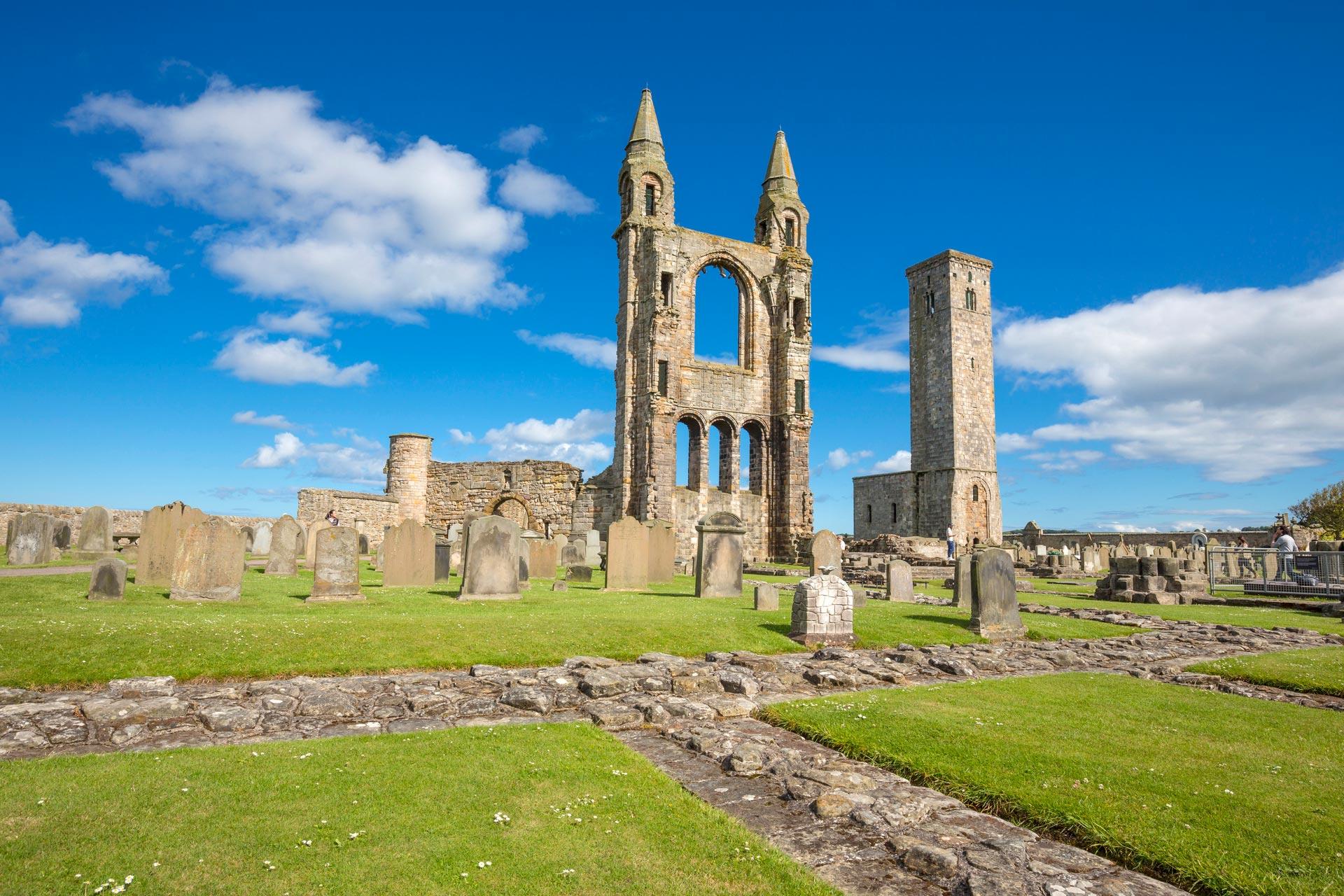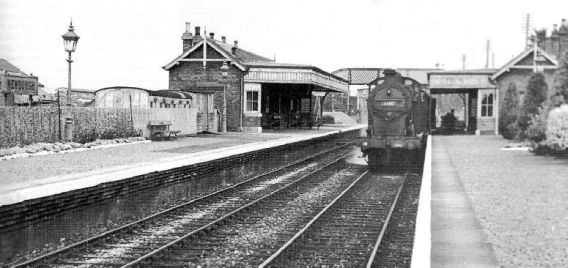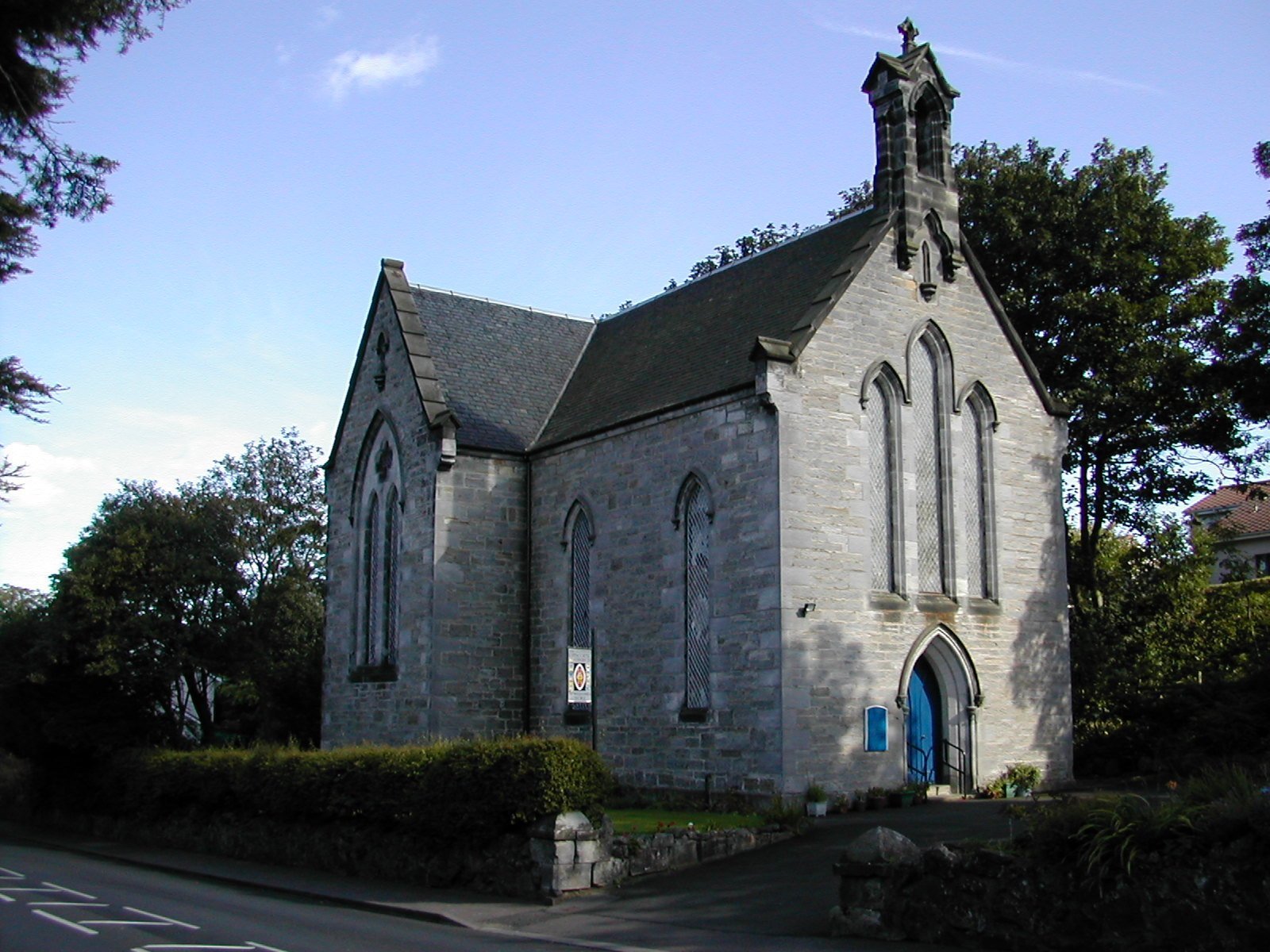Have Bus Pass, will Travel!
DAVID GAULD
18 March 2019.
My wife and I took a cottage for a week’s holiday in a village called Embleton. It is in Northumberland, a few miles north of Alnwick. It was not intended to be a church visiting holiday, nor indeed was it. But every day we left the car at the cottage and went to a local place by bus. Places visited included Embleton itself, Felton, Beadnell, Bamburgh and Warkworth. In all of these places the local Church of England church was OPEN. Visitors were expected and encouraged. Some of the welcoming signs are shown here.
Would this experience of open churches be found in Scotland? Having passed the age of 60 and, therefore, having a bus pass, I intend to find out! I have a list of places in Scotland which used to have a railway station but no longer do. These are the places I shall concentrate on in order to make full use of the bus pass, and because it eliminates the large towns and cities.

“To travel hopefully is a better thing than to arrive.”
DAVID GAULD


So, what do we require in our place of visit? A tearoom is essential. We must have a place to sit, relax, take stock, go to the toilet, and wait for the time of the return journey. Remember it may well be raining during our visit. A second-hand bookshop would be nice – but like banks, public toilets and railway porters, they are a dying breed.
And there must be a church to visit! That there will be churches is certain. Who would have thought that churches would outlast banks? In these secular days, every “place” still has at least one church, and probably several. It may, however, not be open. But even if it is not, an appreciation of the architecture can be made from the outside, with details supplied (with a bit of luck) from the Scotland’s Churches Trust website.
One great advantage of the pre-Beeching rail network was its connectivity. One could go from any place to any other place without leaving the railway. Railway stations were friendly places. They had waiting rooms (with a fire in winter) with toilets. They had a bookstall. There were plenty of staff to help with enquiries, and porters to help with luggage. If a connecting train required an overnight stay, there was a station hotel next door. One never tripped over large items on luggage on trains because luggage travelled in the guard’s van. Compartments gave opportunities for privacy, windows could be opened, and pictures on the walls created a drawing-room atmosphere. In short, it was easier and more comfortable to travel before the reduction of the rail network than it is today.
But now, many places can only be reached by bus, and bus travel, at least to the smaller places, is not like that. We cannot always expect to find a “bus station” with amenities. We are as likely as not to be dropped off at a featureless bus stop with no toilets in sight. In place of a cosy waiting room we, if lucky, will make do with a wind-swept bus shelter. We also cannot expect much in the way of connectivity. Timetables are very difficult to obtain. We also have to be aware that buses have a tendency to commence operations at breakfast time and to cease them at teatime. Again, this is unlike trains, which usually provide early and late services, even if, sadly, there are no longer milk trains and night mails. Nevertheless, we have the bus pass, so we can put up with some inconvenience.
Before making special trips to faraway places, I decided to do a quick visit to some places fairly near my home to get an idea of how I might get on. So, for my first venture I took the number 55 bus from Dundee to NEWPORT-ON-TAY. There were once two railway stations in Newport, named East Newport and West Newport. They survived until 1969.There is no bus station, but I managed to alight at a stop near the friendly Manna Cafe, which I used as my base. The Manna Cafe is a community venture run by the local Church of Scotland. Newport is a peaceful place of very prosperous-looking stone built villas and terraces. Around the corner from the cafe is a superb second-hand bookshop called Mair Wilkes Books.

“It is a wonderful, thriving town and is not the sort of place one would expect to see on my list.”
David Gauld

There are a number of churches and former churches. One of them is St Mary’s Episcopal Church. By the architect T.M. Cappon, it was consecrated in 1887. The rood screen of 1940 is by William Lamb. The organ of 1903/4 by John Miller of Dundee was refurbished in 2000 by Alex Edmonstone of Perth. I was very pleased indeed to find the door open and a prominent notice outside stating, “Open for reflection and prayer.” I entered and found it to be a lovely church with many interesting features. I was the only visitor at the time and there was no one in attendance. Leaflets giving information for visitors were available to take away. If the church happens to be closed when you visit then the key may be obtained from the aforementioned Manna Cafe, and a notice to that effect is displayed in the church porch. All in all, Newport-on-Tay is a perfect example of what church visiting by bus pass should all be about!
ST ANDREWS was next. It is a wonderful, thriving town and is not the sort of place one would expect to see on my list. It qualifies because it no longer has a railway station. It closed in 1969, not due to Beeching cuts, but simply because British Rail couldn’t be bothered to keep it going. I used to love going to St

We hardly
A little city, worn and grey,
The grey North Ocean girds it round,
And o’er the rocks and up the bay,
The long sea-rollers surge and sound.
And still the thin and biting spray,
Drives down the melancholy street,
And
Towers that the salt winds vainly beat.
In St
Next on the agenda was TAYPORT. It is a rather disappointing town. Although just along the road from Newport, the shopping area
Trains to Tayport ceased in 1966 when the approach road to the new Tay Road Bridge was being constructed. It cut across the track of
I tried again with Tayport Parish Church. Again, I found it firmly locked. I felt I was acting very suspiciously just by trying the door handle! So I was disappointed with Tayport. The cafe was fine, but for
Heading back along the south bank of the Firth of Tay, we come to NEWBURGH, reached by the number 36 bus from Perth. We must alight at a suitable stop because there is no bus station. There is a long straggling main street with an astonishing variety of architectural styles, all with an air that the glory days are over. There is a United Reformed Church at one end and a Church of Scotland at the other end. Both were locked when I visited. A cafe, called the Buttercup, incorporated within a petrol station and garage, I am pleased to report, was excellent and friendly!  Newburgh railway station closed in 1955 but the line itself is still open. Trains going between Perth and Edinburgh frequently pass the site of the former station and there seems no particular reason why it could not be re-opened.
Newburgh railway station closed in 1955 but the line itself is still open. Trains going between Perth and Edinburgh frequently pass the site of the former station and there seems no particular reason why it could not be re-opened.
The ruins of Lindores Abbey are nearby, open to the public and associated with a large modern distillery and restaurant complex.
I now turned my attention to the towns of the East Neuk of Fife – Crail, Anstruther, St Monans, Elie, Lundin Links and Leven. These can all be reached by the number 95 bus from St Andrews, which runs once an hour. All these places were formerly served by rail, but the line closed to passenger services in 1965 and to goods in 1966.
The ancient burgh of CRAIL is well known for its picturesque harbour and interesting architecture. There is no bus station but the stops for the number 95 bus are adequate. There are a number of inviting cafes, but for this
Unlike the neighbouring East Neuk towns, ANSTRUTHER is quite a busy place. The waterfront and shops throng with people. Quite why this should be is not clear to me. Perhaps it is accounted for by the fish and chip shops, the Fife Fisheries Museum, and the summer boat trips to the Isle of May. There is no bus station but the bus handily lets one off at the harbour opposite the Fisheries Museum. I had a cup of tea and a bacon roll in the Shore Cafe, then walked up the hill to visit Anstruther Parish Church. It was closed.

I think we’re beginning to see a pattern here. Out of eight churches visited, only one was open. The fact is that, unlike in England, Scottish churches are seldom open to the public except when there’s a service on. Now, it is rather odd that a sizeable number of visitors have more knowledge of, and interest in, the way people worshipped in the fourteenth century than the way they do today. So it may be that the custodians of Scottish churches are conscious of that and take the view that churches are not museums, but living places of worship. While perhaps not quite turning houses of prayer into dens of thieves, the casual visitor may be deemed not to be acting in the proper spirit. Personally, I have sympathy for this view, and if that is the reason Scottish churches are, in the main, kept closed, then fine. But I suspect that the real reason is a can’t-be-bothered-ness. Perhaps it is thought that leaving a church open requires some sort of effort that office-bearers are not prepared to make. If pressed, the likelihood of theft, fire and vandalism will be mentioned. Well, it doesn’t seem to bother the churches that are open, and I have been told that insurance costs less if the church is left open, insurance companies taking the view that trouble is less likely if there might be people about (as long as you don’t leave silver Communion vessels or the like, lying around).
Next on the agenda were St Monans, Elie, Lundin Links and Leven.
Taking advantage of glorious scorching hot weather one day, I took one of the hourly number 95 buses from St Andrews Bus Station to ST MONANS (also spelt St Monance) on the Fife coast There is no bus station at St Monans. Indeed the bus does not enter the village proper, instead of passing along the main bypass road. I alighted at a bus stop at the end of Station Road. The name remains although the railway line is no longer there. The scheduled time for the journey from St Andrews to St Monans is 64 minutes. Interestingly, the scheduled time for the train journey was 47 minutes (but admittedly the bus serves more places and runs far more often).
 I walked through the very attractive village to St Monans Church, which lies right on the seashore, and was very pleased indeed to find it open! Indeed, there was a sign outside saying, “Church open, please come in.” and that’s what I did. The interior is painted white which gives it a bright, light atmosphere. Guide leaflets in a number of languages were available, showing that the church authorities are serious in their efforts to welcome visitors. The church was founded in about 1362 but the current layout dates to 1955
I walked through the very attractive village to St Monans Church, which lies right on the seashore, and was very pleased indeed to find it open! Indeed, there was a sign outside saying, “Church open, please come in.” and that’s what I did. The interior is painted white which gives it a bright, light atmosphere. Guide leaflets in a number of languages were available, showing that the church authorities are serious in their efforts to welcome visitors. The church was founded in about 1362 but the current layout dates to 1955
Returning to the village centre, I had lunch in a cafe called the Diving Gannet. Not only was the meal excellent but the staff were friendly and the service was very prompt. I add St Monans to the small number of places I can recommend to the bus pass church tourist. I returned home from the bus stop at St Monans which has a nice shelter but no seat. Why do bus shelters usually either have no seat at all or a seat that seems to be deliberately uncomfortable? Sometimes I wonder if the people who design bus shelters ever travel by bus themselves!
The weather continuing fair, I persuaded a doughty friend to accompany me on a seven bus adventure. Accordingly, we took a bus to Dundee Bus Station, another to St Andrews Bus Station and then the number X60 from St Andrews to ELIE. Elie has a lovely sandy beach and is full of well-maintained prosperous-looking houses, some of the great historical interest, but there is a surprising lack of shops and tearooms. We had a look at St Michael and All Angels Episcopal Church. It is a “tin temple” moved to the present site in 1924. It was closed. We then tried Elie Parish Church. It was closed but, by chance, we met one of the elders. Noticing that we were especially interested, he opened the church up and gave us a guided tour. The church has a traditional T-shaped plan with a laird’s loft with separate entrance. Following a quick cup of tea in the Ship Inn, my companion and I travelled by the number 95 bus to LUNDIN LINKS. There we caught a glimpse of the Neolithic Standing Stones of Lundin but, as they are beyond the boundary fence of Lundin Ladies’ Golf Course and it would have required a long walk to ask permission at the clubhouse, we didn’t get close to them. Instead, we crossed to the other side of the road and enjoyed an excellent lunch in the very posh dining room of the Old Manor Hotel overlooking Largo Bay. This reminded us of the song we learnt at school:
I cast my line in Largo Bay and fishes I caught nine,
There’s three to boil and three to fry and three to bait the line.
We had a bit of a dispute about this. My companion insisted that the word is “roast,” not “fry.” A quick internet search later revealed why we disagreed. Both versions are in use depending on which songbook is chosen. Our respective primary schools must have used different books! Replete, we walked along the Fife Coastal Path to LEVEN, which has a pedestrianised high street, with all the expected everyday shops, leading down to a clean modern bus station with waiting room, shop and toilets. A quick look at Leven Parish Church revealed it to be closed.
As we saw earlier, the branch railway line from Leuchars Junction through St Andrews and the East Neuk towns to Leven closed many years ago. There are strong campaigns to re-open passenger rail service to both St Andrews and to Leven. Leven has an advantage in that the line from Thornton Junction to Leven still exists, although overgrown because it remained as a goods line after passenger services stopped. This is unlike the St Andrews line from Leuchars Junction which was lifted with indecent haste as soon as passenger services ceased. The track-bed and bridges are now gone and would need to be re-established. A photograph of part of the Thornton to Leven line is shown here.
After a quick cup of tea in Stuart’s Cafe, we took the number 97 bus from Leven Bus Station to St Andrews Bus Station and thence home.
 On another day, my comrade and I broke the rule of going by bus and only visiting places without a railway station, and, instead, got the train (taking advantage of our Senior Railcards!) to BURNTISLAND. We arrived at Burntisland Station at about 09.20 am and went to a nearby second-hand bookshop called Hanselled Books. It looked inviting but, unfortunately, it was closed. We carried on to Burntisland Parish Church. It is of particular architectural and historic significance, being one of the first post-Reformation churches built in Scotland still in use. It was closed. A notice on the gate indicated that it is open on Thursday, Friday and Saturday afternoons. Today was Monday, so not a great start. There are a number of cafes in Burntisland but we didn’t sample any. Instead, we decided to walk to ABERDOUR by way of the Fife Coastal Path.
On another day, my comrade and I broke the rule of going by bus and only visiting places without a railway station, and, instead, got the train (taking advantage of our Senior Railcards!) to BURNTISLAND. We arrived at Burntisland Station at about 09.20 am and went to a nearby second-hand bookshop called Hanselled Books. It looked inviting but, unfortunately, it was closed. We carried on to Burntisland Parish Church. It is of particular architectural and historic significance, being one of the first post-Reformation churches built in Scotland still in use. It was closed. A notice on the gate indicated that it is open on Thursday, Friday and Saturday afternoons. Today was Monday, so not a great start. There are a number of cafes in Burntisland but we didn’t sample any. Instead, we decided to walk to ABERDOUR by way of the Fife Coastal Path.
We know of Aberdour from the poem we all learnt at school. My companion insists that it refers to the Aberdour in Aberdeenshire, not Fife, but I’m not so sure:
Half-
And there lies
Wi the Scots lords at his feet.
Immediately on entering Aberdour we had a cup of tea and a cake in the excellent McTaggart cafe. We got talking about poetry. The train had passed through Kirkcaldy, immortalised in the poem The Boy in the Train by Mary Campbell Smith, although most people can only remember the last two lines:
For I ken
That the next stop’s Kircaddy.
There is no longer a queer-like smell, for the linoleum industry, from which it derived, is gone.
There are many poems about trains, we decided. The Night Mail by W. H. Auden, for example:
This is the night mail crossing the border,
Bringing the cheque and the postal order
Or, From a Railway Carriage by Robert Louis Stevenson:
Faster than fairies, faster than witches,
Bridges and houses, hedges and ditches;
And charging along like troops in a battle,
All through the meadows the horses and cattle
And, Skimbleshanks by T. S. Eliot:
There’s a whisper down the line at 11.39
When the night mail’s ready to depart.
And again, In the Train by James Thomson:
As we rush, as we rush in the train,
The trees and the houses go wheeling back
On the other hand, the only poem I could remember about buses was the unromantic The Motor Bus by A. D. Godley:
What is this that roareth thus?
Can it be a Motor Bus?
Yes, the smell and hideous hum
Indicat Motorem Bum.
Refreshed, and feeling rather pleased with ourselves after remembering all that poetry, we walked along to St Columba’s Episcopal Church, Aberdour.
 It was closed. We retraced our steps and visited St Fillan’s Church of Scotland. It was open and it is wonderful! It has a superbly peaceful atmosphere. It claims to be one of the finest examples of Norman architecture in Scotland, originally dating back to 1123. However, it fell into ruin and the church we see today dates from a restoration of 1925. We t then had a light lunch in the excellent cafe within the adjacent Aberdour Castle. I add Aberdour to the list of places worth visiting! We then returned home by train from Aberdour station. Burntisland and Aberdour railway stations escaped the axe because they lie on the main line from Edinburgh to Dundee, unlike the East Neuk towns including St Andrews, which were on the aforementioned branch line.
It was closed. We retraced our steps and visited St Fillan’s Church of Scotland. It was open and it is wonderful! It has a superbly peaceful atmosphere. It claims to be one of the finest examples of Norman architecture in Scotland, originally dating back to 1123. However, it fell into ruin and the church we see today dates from a restoration of 1925. We t then had a light lunch in the excellent cafe within the adjacent Aberdour Castle. I add Aberdour to the list of places worth visiting! We then returned home by train from Aberdour station. Burntisland and Aberdour railway stations escaped the axe because they lie on the main line from Edinburgh to Dundee, unlike the East Neuk towns including St Andrews, which were on the aforementioned branch line.
Now, it will not have escaped the attention of the astute reader that all of the places so far visited lie on the Fife Coastal Path which stretches 117 miles from Newburgh to Kincardine. It is well documented and advertised and, as my experience shows, there are tearooms in place. It seems to me that Scotland’s Churches Trust with its (so-called) Pilgrim Journeys and the Scottish Pilgrim Routes Forum with its (so-called) Pilgrim Ways are both missing a trick here! These organisations promote church visiting pilgrimages. Here is a route already in place and marked on the Ordnance Survey maps and all that is needed is for the churches to be open! We have seen, so far, that three churches can do it – Newport-on-Tay, St Monans and Aberdour – so come on the others! No promotional effort would be needed other than to add the names to the Fife Coastal Path publicity. And no catering would be required because, as I have found out, there are suitable refreshment establishments all the way.
